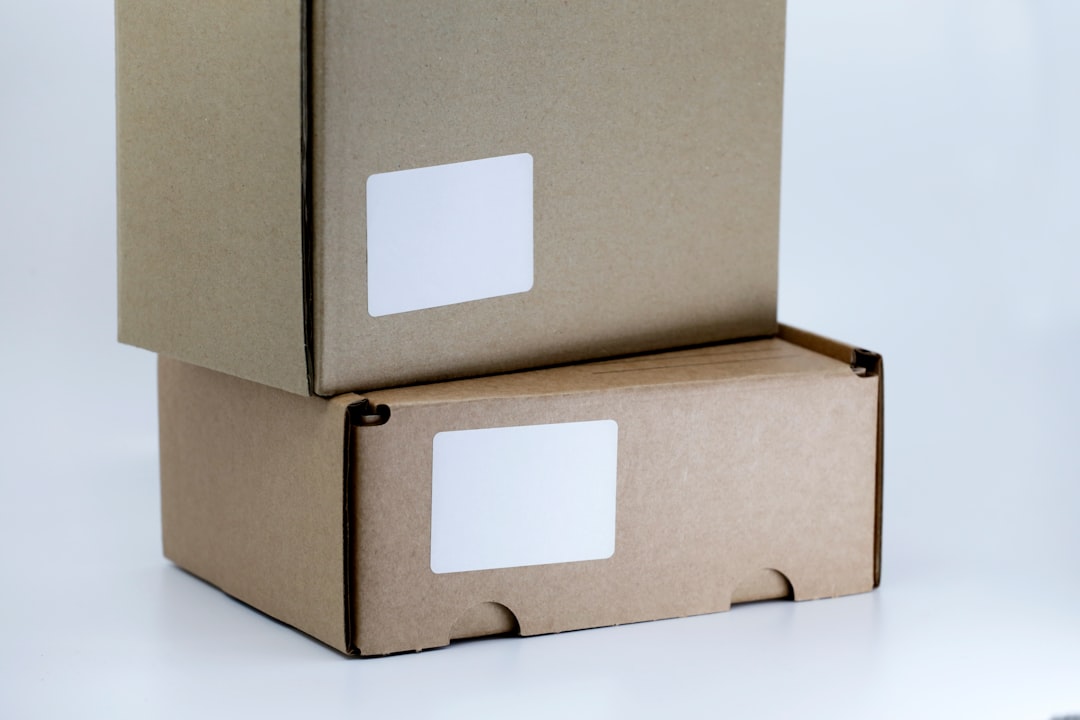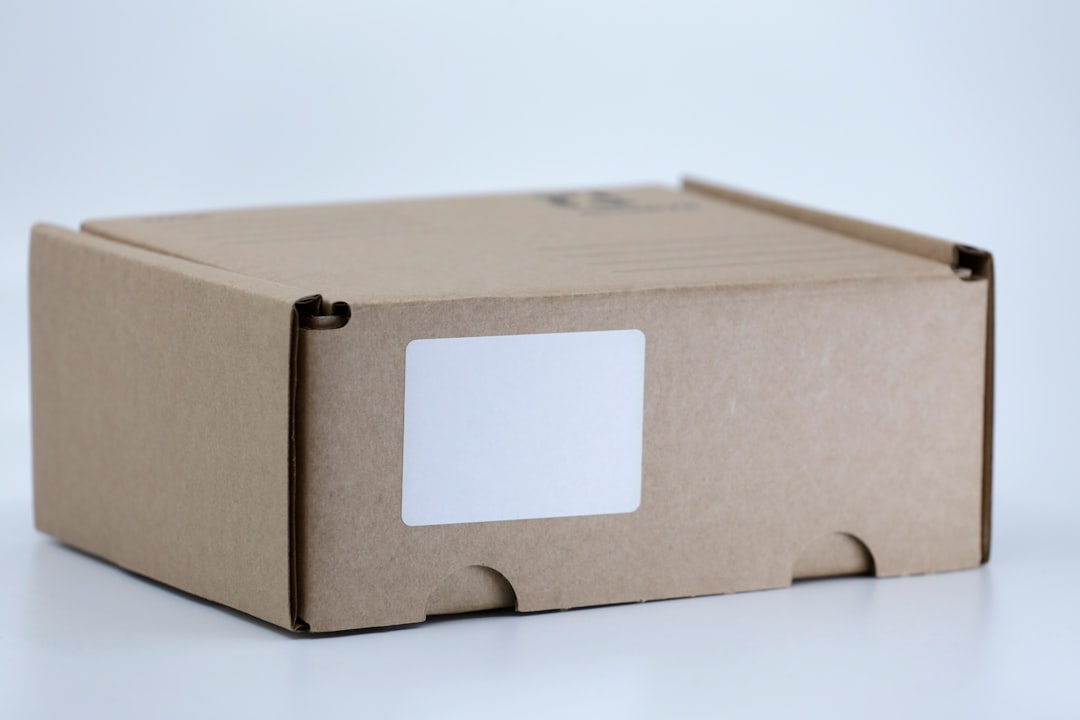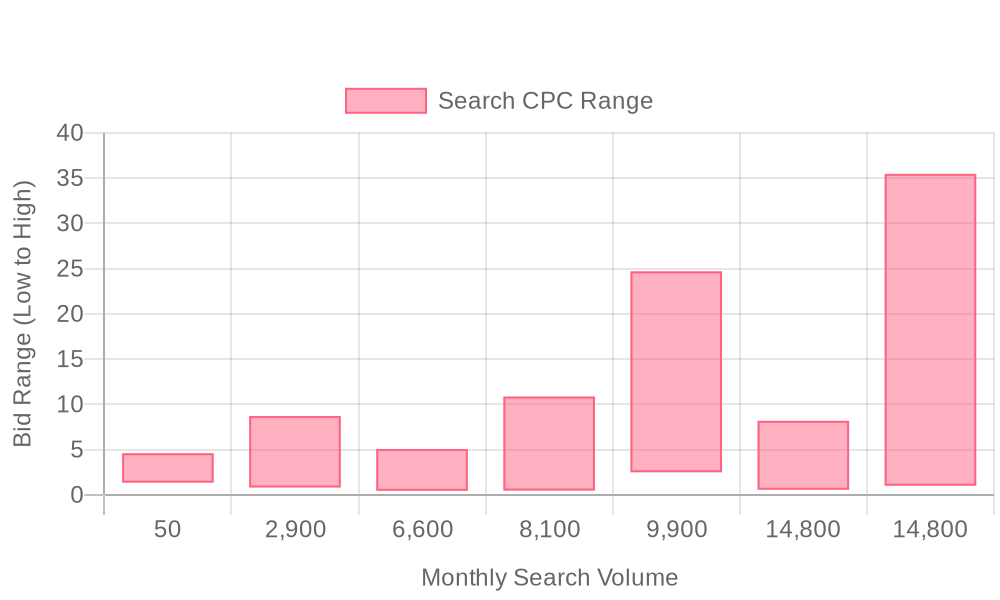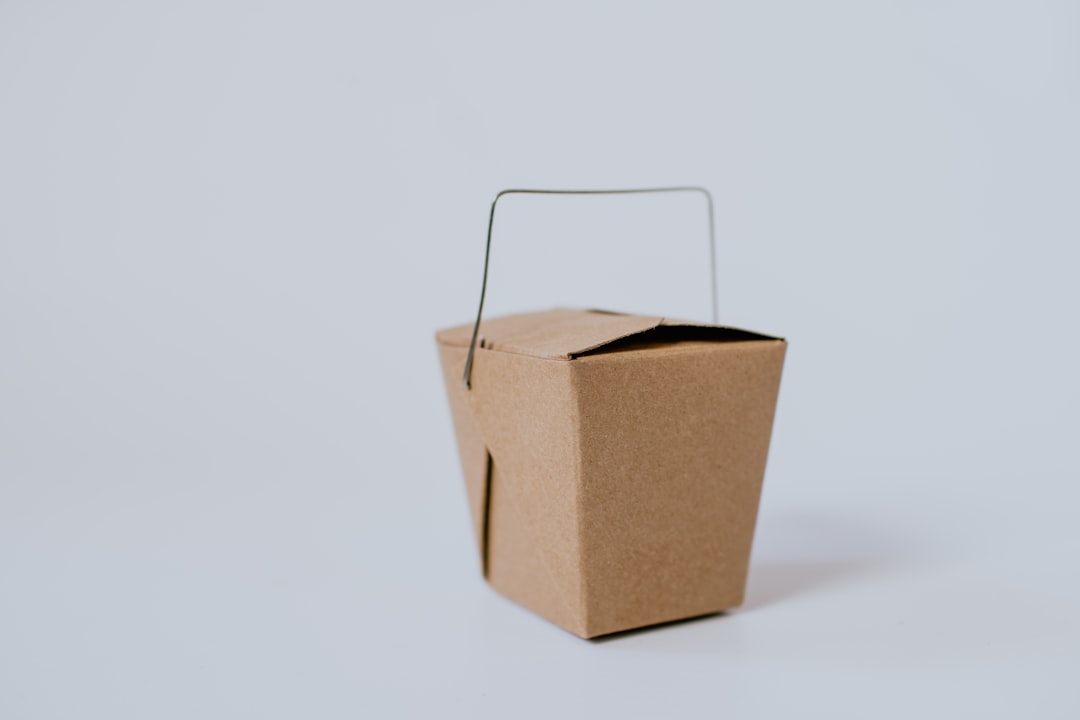
Supercharge your lead generation with a FREE Google Ads audit - no strings attached! See how you can generate more and higher quality leads
Get My Free Google Ads AuditFree consultation

No commitment
Supercharge your lead generation with a FREE LinkedIn Ads audit - no strings attached! See how you can generate more and higher quality leads
Get My Free Google Ads AuditFree consultation

No commitment
Supercharge your lead generation with a FREE Meta Ads audit - no strings attached! See how you can generate more and higher quality leads
Get My Free Google Ads AuditGet My Free LinkedIn Ads AuditGet My Free Meta Ads AuditFree consultation

No commitment
Supercharge your lead generation with a FREE Google Ads audit - no strings attached! See how you can generate more and higher quality leads
Get My Free Google Ads AuditFree consultation

No commitment
In today's fast-paced digital marketplace, businesses specializing in cardboard products confront numerous challenges. Especially in niche markets like eco-friendly packaging, reaching specialized audiences can be a daunting task. The significance of capturing these prospects when they demonstrate genuine interest cannot be overstated, as it directly impacts conversion rates and overall marketing success. Traditional advertising methods alone may fall short, which is where the strategic use of Google Ads shines. By offering precise targeting and real-time analytics, Google Ads bridges the gap between raising awareness and engaging real decision-makers. As the competition in the cardboard industry intensifies, leveraging these modern tools becomes not just an advantage but a necessity to intercept potential buyers at their moment of need and highlight unique product features. Whether you're targeting seasonal demands or aiming to increase visibility in niche areas, integrating Google Ads effectively into your marketing strategy is crucial.

Competitive advantage in the cardboard products sector often comes down to how precisely you can identify and engage your most valuable prospects. Harnessing granular user and company-level insights empowers revenue teams to maximize every dollar invested in paid search and display.
Modern marketers who unify behavioral and CRM data can move beyond generic campaigns, using online intent signals to pinpoint buyers actively researching eco-friendly packaging or custom box solutions. PPC strategy guide provides a deeper look at how packaging companies can leverage Google Ads for niche targeting.
A data-driven approach transforms paid search from a volume play to a precision tool. By profiling visitor behavior in real time, marketers can distinguish between casual browsers and decision-makers at target companies. This enables dynamic Google Ads strategies, allowing you to shift budget instantly toward high-converting accounts and segment messaging for each audience tier—industrial buyers, e-commerce brands, or sustainability-driven retailers.
Category-specific targeting tactics elevate the impact of Google Ads for cardboard products. Rather than casting a wide net, you can build specialized audiences: for example, segmenting users who engage with eco-certification content, or isolating B2B buyers searching for bulk corrugated inventory. For more insights on building high-impact campaigns, check out our guide on retargeting campaigns.
Conversion-focused strategies ensure that every touchpoint—ad, landing page, and follow-up—works together to streamline the user journey. Integrating advanced conversion tracking enables attribution of both online and offline outcomes, so you can measure the true ROI of every ad dollar. Syncing your CRM and ad platforms ensures that leads and audience updates flow seamlessly, empowering your team to re-engage high-value buyers across channels and optimize PPC for cardboard products with clarity and control.

Cardboard product manufacturers and suppliers operate in a rapidly evolving landscape shaped by rising e-commerce, supply chain demands, and sustainability pressures. Digital-first buyers expect fast, relevant solutions, making high-visibility advertising a necessity for capturing qualified leads at the right stage of their purchasing journey.


Identifying new opportunities in cardboard product advertising requires precision and a strong understanding of evolving digital buying signals. The most effective B2B revenue teams rely on data-driven targeting and real-time insights to expand reach, improve lead quality, and optimize spend.
Ready to expand your Google Ads strategy? Start onboarding.
Effective audience segmentation in cardboard product advertising ensures marketing dollars reach the right eyes, maximizing campaign efficiency. Tailoring ads to speak directly to each buyer segment translates to higher engagement, more qualified leads, and measurable revenue gains.
Applying these advanced segmentation practices not only drives higher-quality leads for cardboard packaging marketing but also ensures each campaign adapts in real time to evolving buyer intent, ultimately raising both efficiency and revenue impact.

| Industry | Keyword | Monthly Search Volume | Competition Level | Low Bid | High Bid |
| Cardboard Products | cardboard products | 50 | MEDIUM | 1.36 | 4.6 |
| Cardboard Products | packing boxes for moving | 2900 | HIGH | 0.82 | 8.71 |
| Cardboard Products | cardboard tubes | 6600 | HIGH | 0.45 | 5.06 |
| Cardboard Products | cardboard sheets | 8100 | HIGH | 0.48 | 10.86 |
| Cardboard Products | corrugated boxes | 9900 | HIGH | 2.5 | 24.69 |
| Cardboard Products | packing boxes | 14800 | HIGH | 0.57 | 8.18 |
| Cardboard Products | corrugated cardboard | 14800 | HIGH | 1.01 | 35.46 |
Effective keyword targeting is the foundation of successful Google Ads for cardboard products. A strategic approach to keyword selection not only attracts qualified buyers but also minimizes wasted spend, ensuring every dollar works harder for your marketing goals. By focusing on high-intent phrases and aligning campaigns with real-world demand, cardboard packaging suppliers and manufacturers position themselves to capture both immediate transactions and long-term B2B leads.
By combining precise keyword selection, local modifiers, and robust negative keyword lists, B2B marketers in the cardboard packaging industry create campaigns that consistently attract buyers with strong purchase intent. See how firms use Google Ads provides a practical view of how manufacturing firms are driving B2B leads with Google Ads. Leveraging unified data and intent-based segmentation further amplifies these results, delivering measurable improvements in both lead quality and revenue outcomes.
Executing high-impact google ads for cardboard products requires a deliberate, data-driven framework that aligns every touchpoint with buyer intent. The following steps outline how to maximize reach, engagement, and revenue while ensuring each campaign is responsive to real-world demand signals.
With the right infrastructure, marketers move beyond guesswork and leverage unified data to identify which companies and personas are searching for packaging solutions. Tools like Sona identification help uncover in-market buyers so ad spend supports outreach to verified prospects rather than anonymous site traffic. This level of targeting, matched to real-time search intent, gives revenue teams the flexibility to shift budget toward high-conversion accounts as soon as they emerge.
With advanced segmentation, copy can dynamically update as audience profiles evolve or accounts move through the buying cycle. This ensures messaging stays relevant for first-time visitors, repeat buyers, and those already engaged in the sales process, ultimately maximizing engagement and conversion rates. Google plastic-free pledge provides a deeper look at this trend and what it means for advertisers in the packaging sector.
Integrating enriched audience data into landing experiences allows marketers to personalize content and offers based on previous ad interactions or lead status. When CRM and ad platforms are in sync, revenue teams can customize experiences for each segment, improving lead quality and accelerating pipeline progression.
By integrating real-time behavioral signals and automating audience updates, revenue teams ensure their PPC for cardboard products campaigns remain agile and focused on the accounts most likely to convert. For more tactical tips on improving campaign effectiveness, see our guide on Google Ads ROI tips . This closed-loop approach not only lifts marketing performance but also delivers tangible, attributable business results.

Cardboard product marketers who integrate data-driven tactics gain deeper visibility into evolving buyer intent and market shifts. Advanced segmentation and real-time analytics equip teams to prioritize high-value leads and tailor messaging with precision.
Sustained growth in cardboard packaging hinges on digital strategies that adapt quickly to shifting buyer intent and evolving sustainability demands. Precision-focused Google Ads for cardboard products enables you to tap into segmented audiences, present compelling eco-friendly narratives, and accelerate qualified pipeline growth. Google Shopping Ads provides a closer look at how effective campaign structures can elevate results for packaging and ecommerce brands.
A nuanced approach to PPC for cardboard products starts by identifying industry pain points and mapping them to targeted campaign architecture. Combining detailed segmentation with real-time intent signals, marketers can dynamically prioritize high-value accounts and allocate budget where it generates the strongest ROI. Platforms like Sona Audiences are designed to deliver enriched audience insights and account-level visitor identification for better campaign precision.
With continuous data sync between CRM and advertising platforms, your cardboard product advertising initiatives can automatically update audience lists as leads progress through the funnel. Syncing these enriched segments into Google Ads not only sharpens targeting but also improves conversion tracking accuracy by tying online and offline interactions together. For more insights on advanced attribution, check out our guide on Revenue Attribution.
Optimized digital marketing for cardboard products is not just about pushing impressions or clicks—it is about building a unified marketing engine that nurtures brand loyalty, meets sustainability standards, and delivers measurable business outcomes. By leveraging tailored strategies and advanced data connectivity, you enable your team to capitalize on every market opportunity and position your brand as a leader in eco-conscious packaging solutions.
Mastering Google Ads for cardboard products isn’t just about visibility—it’s about connecting with the right buyers at the right time. By leveraging targeted strategies, you can turn clicks into conversions and grow your business in a competitive market.
From crafting compelling ad copy to refining audience targeting and optimizing bids, this guide has walked you through the essential steps to maximize your ad performance. Whether you’re promoting eco-friendly packaging or industrial-grade solutions, these techniques ensure your campaigns stand out and drive measurable results.
Imagine scaling your cardboard product sales with precision, reaching high-intent buyers, and watching your ROI climb—all while saving time and resources. The tools and insights are within reach; now it’s time to put them into action.
Ready to elevate your advertising game? Start a free trial to experience our platform and its capabilities firsthand.
The best practices include using precise targeting with intent signals, integrating CRM data for personalization, employing advanced conversion tracking, and crafting tailored ad copy that addresses industry pain points and highlights sustainability credentials.
Effective targeting involves segmenting audiences based on search behavior, leveraging intent signals, using vertical keyword targeting, and dynamically updating audience lists to reach high-converting prospects.
Budget allocation should be dynamic, focusing on high-converting accounts identified through real-time data and intent signals, and adjusting spend based on campaign performance and market demand.
Search campaigns, display ads, video ads, remarketing strategies, and ad extensions are effective for promoting cardboard products by targeting specific buyer needs and keeping the brand visible.
Setting up a Google Shopping campaign involves creating targeted keyword lists, using local modifiers, applying negative keywords, and integrating data-driven insights to ensure that ads are relevant and reach the right audience.
Join results-focused teams combining Sona Platform automation with advanced Google Ads strategies to scale lead generation

Connect your existing CRM

Free Account Enrichment

No setup fees
No commitment required

Free consultation

Get a custom Google Ads roadmap for your business
Join results-focused teams combining Sona Platform automation with advanced Meta Ads strategies to scale lead generation

Connect your existing CRM

Free Account Enrichment

No setup fees
No commitment required

Free consultation

Get a custom Google Ads roadmap for your business
Join results-focused teams combining Sona Platform automation with advanced LinkedIn Ads strategies to scale lead generation

Connect your existing CRM

Free Account Enrichment

No setup fees
No commitment required

Free consultation

Get a custom Google Ads roadmap for your business
Join results-focused teams using Sona Platform automation to activate unified sales and marketing data, maximize ROI on marketing investments, and drive measurable growth

Connect your existing CRM

Free Account Enrichment

No setup fees
No commitment required

Free consultation

Get a custom Google Ads roadmap for your business
Over 500+ auto detailing businesses trust our platform to grow their revenue
Join results-focused teams using Sona Platform automation to activate unified sales and marketing data, maximize ROI on marketing investments, and drive measurable growth

Connect your existing CRM

Free Account Enrichment

No setup fees
No commitment required

Free consultation

Get a custom Google Ads roadmap for your business
Over 500+ auto detailing businesses trust our platform to grow their revenue
Join results-focused teams using Sona Platform automation to activate unified sales and marketing data, maximize ROI on marketing investments, and drive measurable growth

Connect your existing CRM

Free Account Enrichment

No setup fees
No commitment required

Free consultation

Get a custom Google Ads roadmap for your business
Over 500+ auto detailing businesses trust our platform to grow their revenue
Our team of experts can implement your Google Ads campaigns, then show you how Sona helps you manage exceptional campaign performance and sales.
Schedule your FREE 15-minute strategy sessionOur team of experts can implement your Meta Ads campaigns, then show you how Sona helps you manage exceptional campaign performance and sales.
Schedule your FREE 15-minute strategy sessionOur team of experts can implement your LinkedIn Ads campaigns, then show you how Sona helps you manage exceptional campaign performance and sales.
Schedule your FREE 15-minute strategy sessionOur team of experts can help improve your demand generation strategy, and can show you how advanced attribution and data activation can help you realize more opportunities and improve sales performance.
Schedule your FREE 30-minute strategy sessionOur team of experts can help improve your demand generation strategy, and can show you how advanced attribution and data activation can help you realize more opportunities and improve sales performance.
Schedule your FREE 30-minute strategy sessionOur team of experts can help improve your demand generation strategy, and can show you how advanced attribution and data activation can help you realize more opportunities and improve sales performance.
Schedule your FREE 30-minute strategy sessionOur team of experts can help improve your demand generation strategy, and can show you how advanced attribution and data activation can help you realize more opportunities and improve sales performance.
Schedule your FREE 30-minute strategy session





Launch campaigns that generate qualified leads in 30 days or less.
